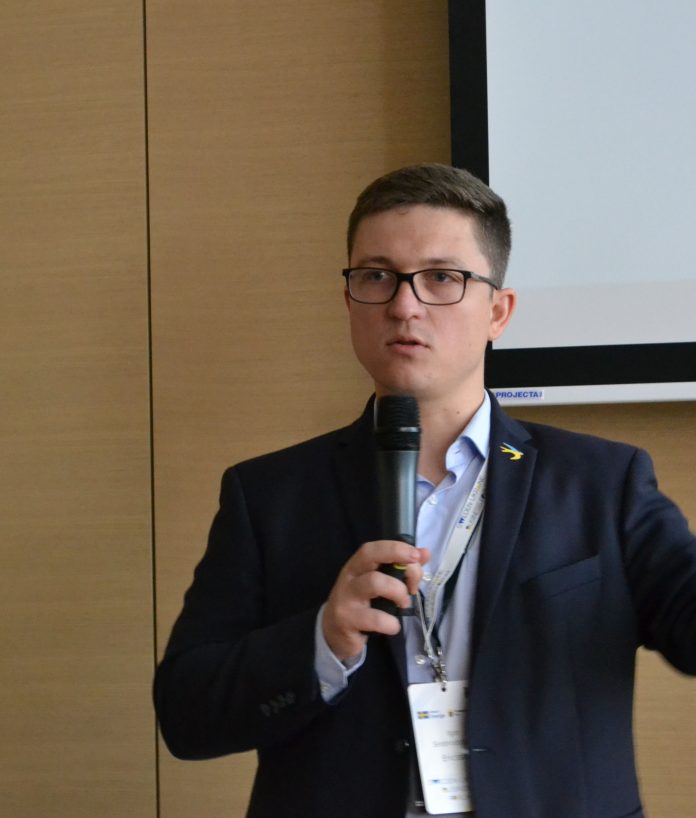Director of Business Development in Ukraine for Ericsson, Ihor Srebrodolsky, spoke with The Journalist correspondent about the main activities of the organization and the challenges to be addressed today in the field of communications on the Ukrainian market. On introduction of the fourth generation technology, and when Ukrainians should expect 5G, see below.
– Tell us, please, what are the main activities of the company today? What is Ericsson focused on in Ukraine?
The main focus is on the further introduction of 4G technology. It was launched last year. And now we are helping our partners (telecom operators) to expand coverage in order to bridge the technological gap in the country.
Secondly, we are focused on industrial solutions and search for new sources of increased profitability for telecom operators, since operators could not significantly increase the revenues from ordinary users, at least at the moment. Almost no increase of telephone cost and the Internet connection. Meanwhile, for 5 years the operators have invested billions of hryvnias in licenses, equipment, software, training people, etc. That is, now the operators have to regenerate their activities to restore financial potential for future investments, and, probably, to find new sources of income today. And we are helping with this deal.
Speaking about trends on the market today, one should note a growing interest of industrial companies. They see the point of investing in cooperation with the operator, or directly in the technology of the fourth generation with a view of implementing it at their production facilities. This is a current global trend.
– What about ordinary users? Are there any efforts in this direction?
Certainly! A separate direction is presented by ordinary users. This sector faces two questions – it is coverage. It suffers because of lack of low frequencies. Today in villages, outside cities we still have GSM. We help telecom operators and the regulator in developing the concept of using low frequencies for fourth-generation deployment.
With the introduction of fourth-generation 4G technology in the cities of Ukraine, the users received communication services of a new level. However, today we are in a situation when the usual voice communication by a mobile phone is still based on the technology of the second generation. The Internet works fast enough, but the voice quality and a range of services is still at the level of the second generation. Therefore, our focus with respect to ordinary users is on new voice services. There is an interesting range of technologies that can be implemented now. Operators are thinking about implementing it in 2019. That is, we are talking about a new round of communication – a high quality voice and expansion of service. The latter provides for additional video call, sharing location on a map, sharing information online, and simultaneous browsing a website.
– Why did you decide to focus on the service component?
The subscribers in Ukraine are not provided enough quality free services (Viber, Whatsapp, etc.). The services available at the moment are not sufficient enough to meetl the ordinary people’s needs, because the quality while working with stationary Wi-Fi is satisfactory, but while moving, the network operator does not prioritize OTT services over other technologies, such as watching Video. Accordingly, we have a technological gap, which we strive to close in the nearest future.
With the advent of fourth-generation 4G technology in the cities of Ukraine, users received a new level of communication services. However, today we have a situation where the usual voice communication from a mobile phone is still working on the technology of the second generation. The Internet works fast enough, but the voice quality and range of services is still at the level of the second generation. Therefore, our focus with respect to ordinary users is new voice services. There is an interesting range of technologies that can be implemented now. Operators are thinking about how to do this already this year. That is, we are talking about a new round of communication – a voice with high quality and an expansion of service. The latter provides that by calling each other, we will be able to add video calling, share location on a map, share information online, and simultaneously browse a website.
– Now the introduction of technology of the fifth generation is widely spoken about. How long will Ukraine wait for its appearance? Or is it senseless to expect it in the nearest future?
By the decree on the introduction of 5G in 2020, the former president, Petro Poroshenko, created the first impetus for our country to move towards the fifth-generation technology along with the other countries. It is not a global trend so far, just a few countries have launched this technology in some districts of big cities or on industrial sites. That means, they are pilot, commercial, targeted projects.
Now in Ukraine, the telecom operators, together with the regulator, will analyze at what frequencies it will be possible to launch the technology, what should be done to separate old and new technologies. Let’s see what decisions will be made at the regulator’s level.
It should be noted that one of the factors for the 5G distribution in Ukraine will be readiness of ordinary users for changing the final equipment. That is, will the Ukrainian user be financially able and mentally prepared to change his smart phone as quickly as, for example, they do in Korea? There are already 0.5 million smart phones with support for 5G technology (about 15 phones already support it). Korean users are ready to change their smart phones to use new technologies and new opportunities. They are more prone to rapid changes in gadgets.
Подписывайтесь на telegram-канал journalist.today







